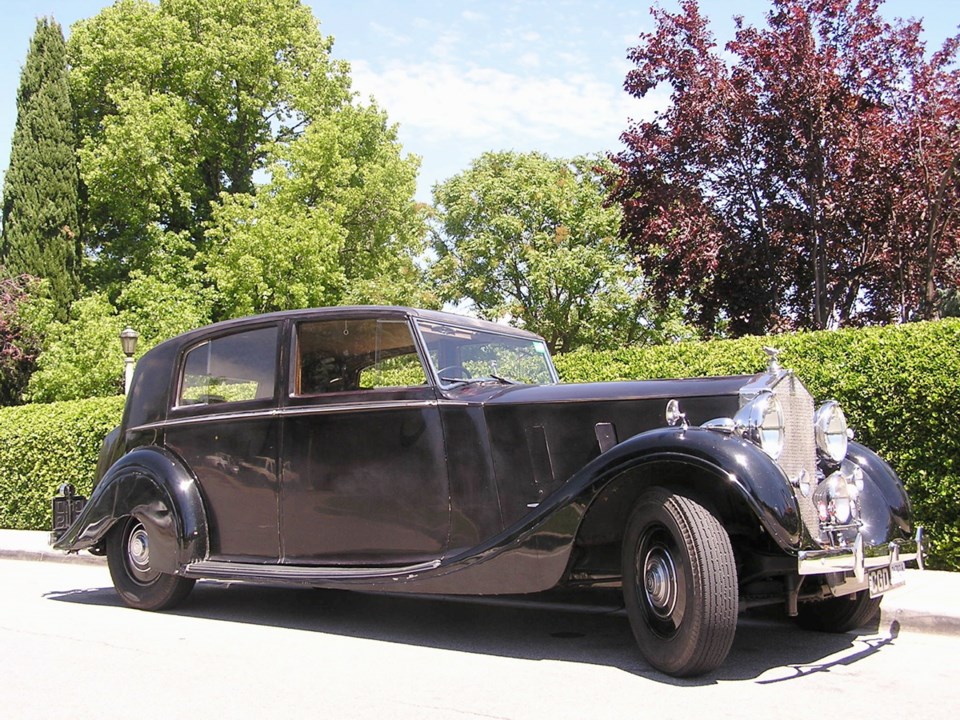During the classic 1930s era, luxury cars were powered by large multi-cylinder engines. Eight was the bare minimum for acceptance, with both straight-eights and V-8s being popular.
But it usually took even more cylinders to crack the very top echelon. Cadillac introduced a V-16 in 1930 and a V-12 in 1931. Marmon had a V-16, and Packard a V-12 from 1916 to the late 1930s. Lincoln had V-12s, as did Auburn, Pierce-Arrow and Franklin. Duesenberg got by with just eight because of its outstanding engineering, including double overhead camshafts, supercharging and very high performance.
In Europe, the French Hispano-Suiza offered a V-12, and the English Daimler bowed in 1927 with its sleeve-valve V-12 Double Six. Through all this, Rolls-Royce, reputedly “The Best Car in the World,” carried on with only six cylinders, apart from a short flirtation with a 1906 V-8.
It wasn’t that Rolls-Royce lacked familiarity with large multi-cylindered engines, having developed a V-12 aviation engine in the 1920s. And its V-12 Merlin aero engine was one of the world’s most famous.
In 1935, Rolls-Royce decided finally to join the 12-cylinder club with the 1936 Phantom III. Its 60-degree, V-12’s bore and stroke were 82.5 x 114.3 mm, yielding a displacement of 7.3 litres. Even though it was a 12, it was slightly smaller than the 7,668 cc inline six of the Phantom II.
Although R-R declined to quote power figures, loftily describing them as “adequate,” the 12’s horsepower was estimated at 165. This increased to about 180 in 1938 with freer breathing cylinder heads.
Aluminum was used liberally throughout, including cylinder heads, block and crankcase. The overhead valves were actuated by a single, gear-driven camshaft, pushrods and hydraulic valve lifters. Unfortunately, the valve lifters would prove troublesome.
The engine was a wet-sleeve design using cast-iron cylinder liners, a sturdy seven-bearing crankshaft and fork-and-blade connecting rods rather than the now universal side-by-side type.
With 12-volt twin ignition (24 spark plugs), two distributors and coils and four carburetors (soon changed to one) it was similar to two sixes on a mutual crankcase. Engine warm-up was hastened and coolant temperature maintained by thermostatically controlled radiator shutters.
Power went to the rear wheels through a four-speed manual transmission mounted separate from the engine. Its first gear was a very low “stump puller” ratio, although one can hardly imagine a Rolls-Royce pulling stumps. Second was normally used for launching, and second, third and fourth were synchronized. There were built-in hydraulic jacks to facilitate tire changing.
The low 4.25:1 axle ratio allowed the flexibility to drop down to walking speed in top gear and accelerate smoothly away, a highly prized feature in those pre-automatic transmission days. The shift lever was on the floor on the right side of the right-hand drive car, not in the middle, making driver entry and exit a little awkward.
Surprisingly, the brakes were still mechanically actuated by rods and cables, although boosted by a transmission-driven clutch-type servo motor. Suspension was independent in front (Rolls’s first) with oil-immersed, horizontally positioned coil springs. Rear suspension was semi-elliptic springs and the chassis could be lubricated by a foot-operated pedal.
Shock absorber stiffness automatically increased with speed or could be altered using a steering column-mounted lever, an idea still used today, although now actuated electronically. Horn volume could be changed for city or country driving.
Interior appointments varied with coachbuilder but usually included perfume bottle holders, hand mirror, spirits storage and glasses, a clock and fitted luggage. A rear window blind enhanced privacy.
The Phantom III was a big car with a 3,607 mm wheelbase and ample 5,410 mm length.
Its almost 2,722 kg weight was carried by huge 700 X 18 tires. In spite of this mass, the big V-12 could haul it to 97 km/h in 15 to 16 seconds, and to a top speed of 150 km/h or more, depending on coachwork. It got about 10 to 14 mpg, supplied by electric fuel pumps from the 186-litre tank.
Phantom IIIs were made only until 1939, when the Second World War halted car production. After the war, Rolls-Royce’s Silver Wraith reverted to six cylinders with an “F-head” valve arrangement of inlet valves in the head and exhausts in the block.
The Phantom III could be called the pinnacle of Rolls-Royce development. It would take a long time — 65 years — before there would once more be a Rolls-Royce V-12, this time the 2004 Phantom.
But now, it was not a Rolls-Royce-built engine behind that majestic Parthenon-shaped grille and Spirit of Ecstasy hood ornament, it was a BMW. In an ironic twist of history, the German firm now owned England’s most prestigious automobile builder.



